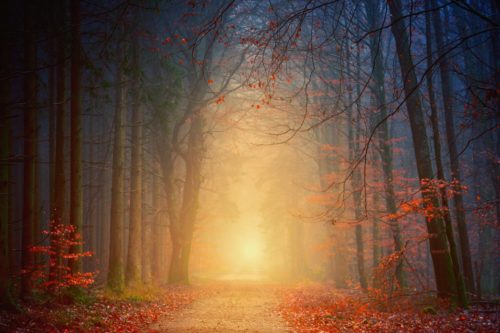This post will explore the relationship between art and mystery. I will look at a couple of my own favourite pieces of art. However, the points I will touch upon can also apply to your own personal favourites too.
Mystery often serves an important purpose within art. A painting can create a small slice of a world that our imaginations can inhabit. Some of the most effective pieces of art can take us a step further, and make our minds wonder what else exists in these imagined worlds. We want to enter the world of the painting, walk about within it, and see what lies beyond our eye’s reach. This mystery can be one of the most intriguing elements of a painting.
Here are links to a couple of paintings which I find effectively create a mysterious world, and then draw you into it.
The first of these is Caspar David Friedrich’s The Wanderer Above the Sea of Fog, which you can view here on WikiArt. I have mentioned this painting in my blog post on free-form writing (which you can read here) and I am purposefully coming back to it in this post. I think it is a painting which creates a deeply intriguing imaginary world. It achieves this through the glimpse of far-off peaks in both the middle ground and background of the painting, as well as the swirling fog which lie just below the wanderer. Looking at this scene, I want to walk down into the fog and see what I discover. I want to know what the climb to the distant peaks is like.
Another painting which also very effectively creates a mysterious imaginary world, albeit a somewhat different one to that in The Wanderer Above the Sea of Fog, is A Bar at the Folies-Bergère by Edouard Manet. In this 1882 painting, viewable here on the Manet website. We are at first presented with what looks like a simple scene of a woman behind a bar. However – the more you look at the painting, the more confusing things become. At first you think there is a mirror behind the woman, but then due to the misalignment of objects, doubt is thrown upon this conclusion. Other questions abound. What is the relationship between the woman and the man to the right of the painting? Is the reflection of the woman actually a reflection, or is it another person? You feel yourself wanting to enter the slightly surreal world of the painting in order to answer these questions.
They both do it in different ways, but each of the paintings create a mysterious world that draws you in and make you want to become part of them. Hopefully they can provide a source of inspiration if you are wanting to create a sense of mystery in your own work.
To help you with this, here are some things to consider:
- How do you want to create mystery? Is it through the creation of a landscape, or the portrayal of a person?
- Do you want to create mystery through what you don’t show (eg. whatever lies below the fog in Friedrich’s painting) or through what you do show (eg. the misaligned reflections in Manet’s painting)?
- Both the paintings I have included depict a human figure. But do you need to include a person at all in your painting? How could you create a mysterious piece of art that doesn’t show people at all?
- In what other ways might you be able to create a sense of mystery in your artwork?
These are just a few things to consider, but I hope they provide a useful starting point when wanting to inject a sense of mystery into your own artwork. I look forward to seeing what you create.
Ned Vessey, Blog Co-ordinator
Photo by Johannes Plenio from Pexels
Read this blog post on the Spellbinder Medium site here.

